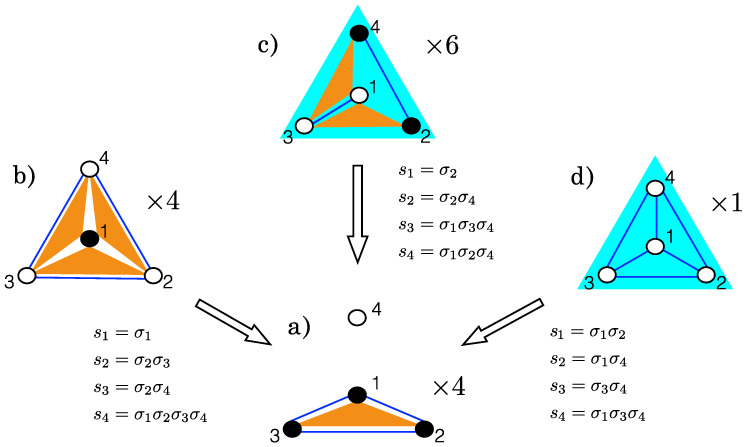Figure 1.
Example of gauge transformations between models with spins. Models are represented by diagrams (color online): spins are full dots • in presence of a local field, empty dots ∘ otherwise; blue lines are pairwise interactions (); orange triangles denote 3-spin interactions (); and the 4-spin interaction () is a filled blue triangle. Note that model a) has all its interactions grouped on 3 spins; the gauge transformations leading to this model are shown along the arrows. All the models belong to the same complexity class, with , and a number of independent operators (e.g., and in model a)—see tables in Section SM-6 of the Supplementary Material. The class contains in total 15 models, which are grouped, with respect to the permutation of the spins, behind the 4 representatives shown here with their multiplicity (). Models a), b), c) and d) are respectively identified by the following sets of operators: (a) ; (b) ; (c) ; and (d) .

